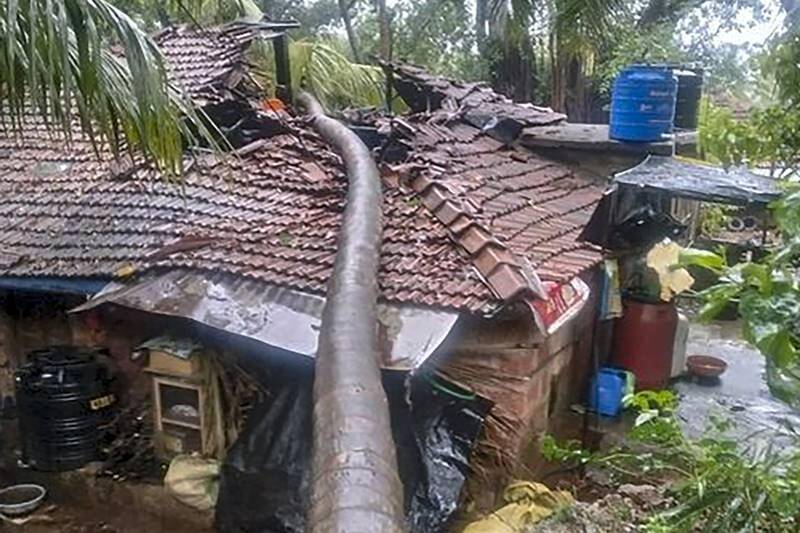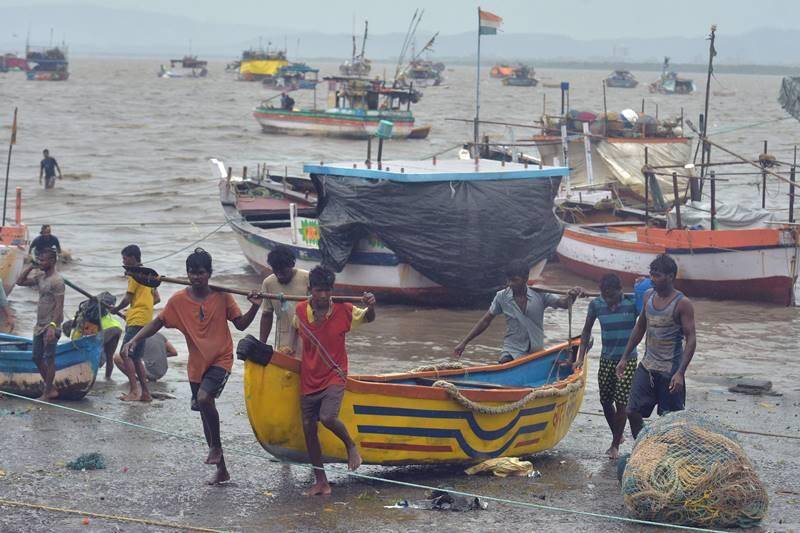
Do cyclones only affect life & property? Time to assess impact on nature, society

Every time a natural calamity strikes or is about to strike, the government focuses its energies on two onerous tasks: moving people to safety and providing financial compensation. While it is true that improved early warning systems and a robust relief mechanism have helped minimise loss to life, the same cannot be said about financial aid. The damage to nature, social harmony and human relationships is not even considered while calculating the ‘real’ cost of natural calamities.
Cyclone Nisarg hit the Konkan belt of Maharashtra in June 2020 and left behind a trail of destruction which is difficult to fathom only in terms of money. Here’s a lowdown on its impact on the natural landscape of the coastal region and how it affected people, who may take years to come out of its shadow, despite one-time paltry government compensations.
Rs 1.6 lakh govt aid for every damaged house, but is that enough?
Prakash Joshi, a resident of Velas village in Ratnagiri, lost his mud house. The Maharashtra government had declared a compensation of Rs 1.6 lakh for every house damaged in the devastating storm, but Joshi says a major portion of his house was razed to the ground and he would need at least Rs 8 lakh to Rs 10 lakh to make it worthy of living in.

Ismail Hamdule and Mirza Nadkar are two prominent mango traders from Bankot (also in Ratnagiri). Hamdule said he gave a sum of Rs 30 lakh as five-year rent to a mango orchard owner, against which he gets to sell all the mangoes produced in the orchard. However, the cyclone caused extensive damage to the mango trees, which cannot give expected yield at least for the next 10 years. “The Maharashtra government declared a compensation of Rs 50,000 per hectare, which could be fine for field crops like pulses and cereals, but the same yardstick cannot be applied to horticulture crops of the region like mango, coconut and beetelnut, because damage to huge trees suppresses yields for at least 10 to 15 years,” said Dr Gurudas Nulkar, an ecologist, who is the lead author of the study “Nisargache Thaiman (The devastating trail of Cyclone Nisarg-2020).
For each coconut or mango tree damaged, the state declared a compensation of Rs 250. The report suggests that income from coconut, mango and beetelnut trees has gone down by 70% to 80%. Therefore, the compensation offered is negligible.
Loss to nature
The Maharashtra government pegs the total loss caused to the cyclone in Raigad, Ratnagiri and Sindhudurg districts of Konkan region at Rs 6,000 crore. But it does not account for the loss caused to biodiversity of the fragile Konkan region, which extends up to 50 km inside the main land of Maharashtra before merging with the ecologically sensitive Sahyadri mountains (Western Ghats).
Abhay Kelaskar, who is a keen observer of birds, said that thousands of suru trees (Casuarina) that line the coasts of Velas, Anjarle, Utambar and Aade villages got uprooted in the cyclone. “Firstly, suru trees do not belong here. Earlier this landscape was covered by native tree species like Undi, Karanj, Karanj Vel, Pilu and Noni, which protected the coastal villages from raging sea water and strong winds. They were cut to plant attractive-looking suru trees, which got easily uprooted in the cyclone. And with them about 15 nests of the rare sea eagle too have gone,” said Kelaskar.
In the absence of a thick tree cover, the villages have no natural protection against future cyclones, considering that scientists now say the number of storms along the west coast are bound to increase in the coming years mainly due to a warming Arabian sea.
No government, unfortunately, has any mechanism to measure the loss caused to nature and also to humans due to felling of trees. “The government does not even have a count of total trees uprooted in the cyclone. Loss of one tree means loss of habitat and food for several birds, reptiles, climbers and countless number of insects. All these together constitute biodiversity. And we know that loss of biodiversity is the chief cause of climate change,” said Dr Nulkar.
Nisarg hit Konkan in the first week of June, which delayed monsoon thus affecting farmers’ crop cycle and fishermen’s income, which cannot be paid for in terms of paltry compensations.
Cost to humans
The government may pat its back for saving precious human lives, but does it have a plan to rebuild lives devastated by the rampaging storm? Besides fishing and cultivation of mango and coconut trees, people of Konkan rely heavily on tourism for survival. The COVID pandemic choked the flow of tourists and now the damaged houses with treeless landscapes have deprived the locals of the opportunity to provide attractive homestay and food facilities.

“Joblessness will increase loan defaulters, which in turn will affect people’s mental health and result in people spending less on quality healthcare. Education, especially in girls, will take a backseat and encourage child marriage. In the long-term, it could result in poverty, addiction, extortion, thefts, migration and even suicides,” said Dr Nulkar.
Barter system was prevalent here. A small village called Ranval, located about 10 kms from Velas, had an age-old practice, by which members of a community bring fodder from the nearby grazing lands and give each bale of the fodder to cattle owners against four coconuts. The study found the practice is all but over now. This has forced locals to depend more on money, which is hard to come by for people who live in abject poverty.
Effect on social harmony
Tourism is a big business in Dapoli. A large chunk of the workforce has come from other states. They have been working in hotels and restaurants here for several years. The pandemic followed by cyclone stopped tourist inflow, thus leaving many without jobs, the study found. The people left unemployed nurse resentment against the hotel owners, who they say used them to make big profits when things were rosy. “Today, we have no work here and it’s an everyday struggle to make the two ends meet. I cannot even go back to my home town in Bihar because there is nothing there for me now,” said a 35-year-old man, who worked as a waiter in one of the seaside resorts.
The study cites several other examples to prove that a natural calamity has the potential to create disharmony in the society by increasing atrocities against women, affecting education, leading to discontent against government officials for want of appropriate compensation, shut down small scale industries, increase groupism etc. The struggle for survival may also lead to rise in communalism and disturb peace, fears Dr Nulkar.
(Read tomorrow – Part II: Suggestions for building cyclone-resistant societies in West Coast of India)


